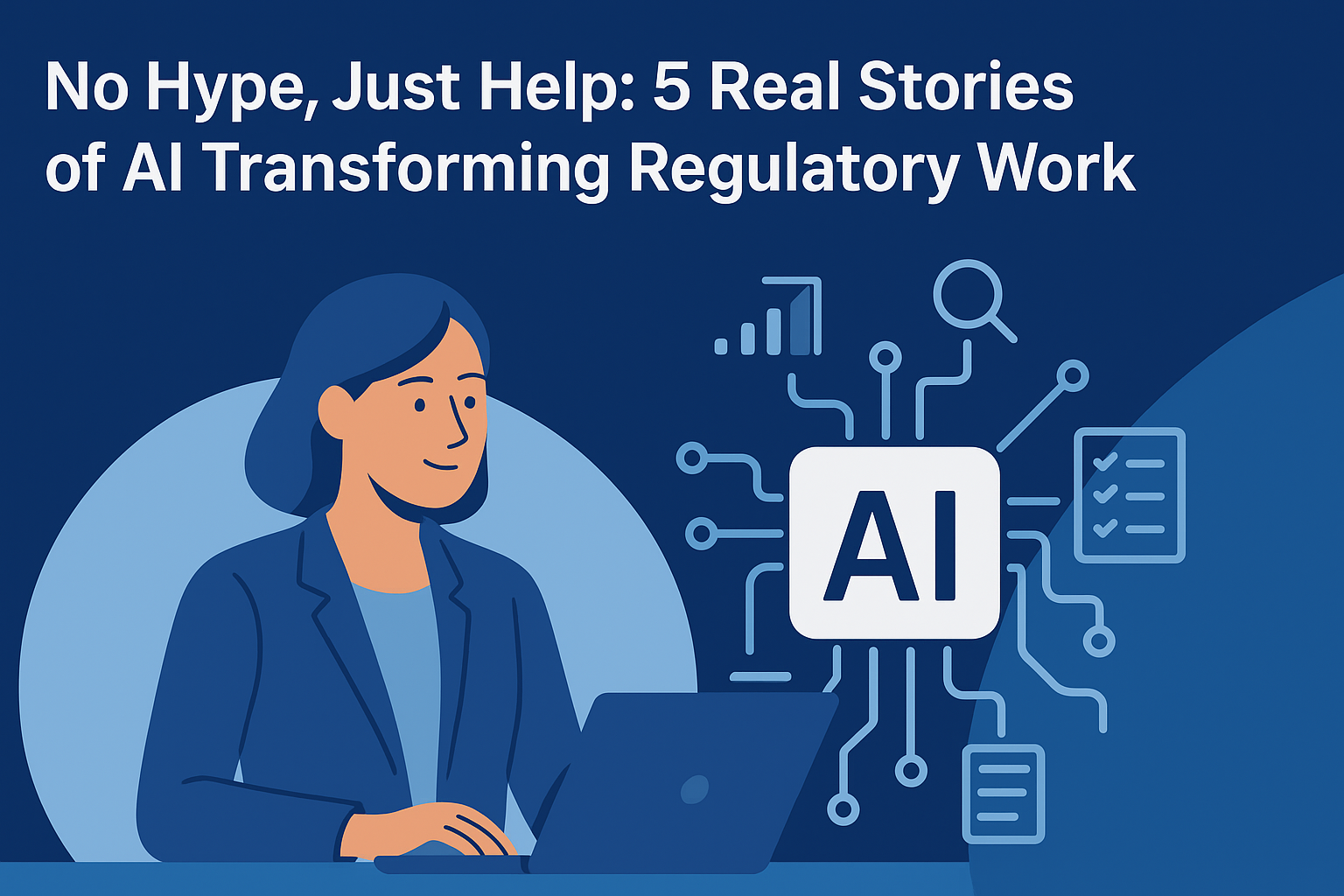At RAPS Convergence 2025, our CEO Michelle Wu shared something refreshing in the AI conversation: real stories from real regulatory professionals who are using AI to solve actual problems. Not hypothetical futures or flashy demos, but practical tools make their daily work faster, smarter, and less stressful.
As Michelle put it, "I'm a data nerd and tech nerd from Silicon Valley," but this wasn't about the latest AI hype cycle. It was about giving regulatory professionals back one hour of their day, every day.
The Reality Check
Regulatory affairs is demanding work. You need deep knowledge across global regulatory intelligence, therapeutic areas, device classifications, and ever-changing guidance. Finding insights quickly enough to add strategic value—while staying on top of submissions, queries, and tight deadlines—feels nearly impossible.
The question isn't whether AI can help. It's whether it can help you with the work on your desk right now.
Five Stories That Matter
1. Finding the Right Predicate in Days, Not Weeks
A regulatory consultant and former Medtronic VP needed to identify predicate devices for a novel product. Anyone who's navigated the FDA 510(k) database knows the pain: guessing keywords, sifting through results, wondering what you're missing.
Using AI-powered search, the team surfaced 250 potential predicates, quickly narrowed them to 40 viable options, then identified 5 strong candidates. The entire process, from initial research through cross-functional alignment with marketing, business development, and finance, took less than a month.
The VP of Regulatory Affairs, with 14 years at the company, said she'd never seen work done this quickly.
2. Benchmarking State-of-the-Art in Hours Instead of Weeks
A former Abbott director with 187 Clinical Evaluation Reports under his belt faced a familiar challenge: gathering global approval data across the US, EU, Japan, China, Australia, and Brazil, each with language barriers and different data structures.
What previously took 2 days to 2 weeks now takes 2 hours. The AI doesn't just find exact keyword matches, it understands context. Search for "pediatric use" and it surfaces devices approved for "adolescents under age 14." Those nuanced connections matter in regulatory submissions.
His reaction? "In a million years I would never have thought to search for that term, but it makes all the difference."
3. Winning Breakthrough Designation Through Smart Literature Research
A small but ambitious regulatory team wanted to file for breakthrough designation—a high-stakes move that could capture 80% of market share if successful. The challenge: conducting comprehensive literature research quickly in a competitive race.
Using AI to apply inclusion/exclusion criteria and analyze 928 papers, they compiled the evidence needed to make their case to the FDA—faster and more accurately than manual review.
4. Proving the FDA Wrong (Respectfully)
A medical device company was in final stages of approval when the FDA requested "real-time imaging" be removed from their indication for use, claiming it had never been approved before.
Frustrated but determined, the team searched our database and found 3 historical FDA approvals with real-time imaging. They shared the 510(k) submissions and FDA links with their reviewer.
The FDA's response? Surprise and acceptance. They approved the language.
5. Saving $300K and Critical Time
Another device manufacturer faced a last-minute FDA request for additional cleaning validation testing, $300,000 and significant delays on the line.
The regulatory team fought back with data: comparative analysis showed the FDA had never required this testing for similar products, and adverse event data showed cleaning was never an issue with this device type.
The FDA withdrew the request. The team launched on time and became internal heroes.
The Real Promise of AI
These aren't stories about AI replacing regulatory professionals. They're about AI doing what it does best, processing massive amounts of data quickly, finding patterns humans might miss, and surfacing relevant information instantly, so regulatory professionals can do what they do best: strategic thinking, relationship building, and expert judgment.
The goal isn't to automate your job. It's to give you back time to do the parts of your job that matter most.
What This Means for You
Whether you're identifying predicates, benchmarking competitors, preparing CERs, responding to FDA queries, or conducting literature reviews, AI tools can help you work faster and more comprehensively.
The regulatory professionals using these tools aren't just saving time. They're making better arguments, finding stronger evidence, and adding more strategic value to their organizations.
As one user put it: "I'm not just faster.I'm more confident, more thorough, and honestly, much happier in my work."
Ready to see what AI can do for your regulatory workflow? We offer complimentary tools to get started, professional training programs, and starter-friendly options for those between roles or exploring new career opportunities. Because in the end, the best AI isn't about the hype. It's about the help.
Watch the full recording here:

